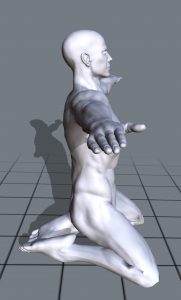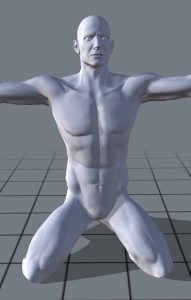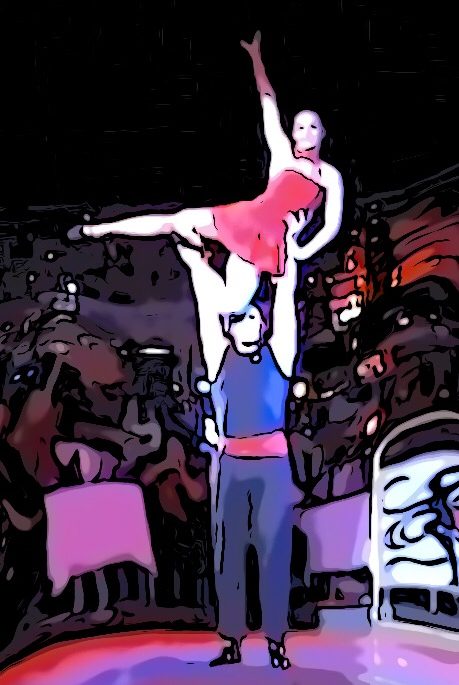

The base has no eye contact with the flyer when balancing on the shoulder. In order to nevertheless be able to bring in quick corrections, the base uses his head for balancing. This requires causes the flyer to lean with a slight pressure to the head of the base:
1) The lying flyer is held with the shoulder or arm against the head and as close as possible to the neck.
2) Sitting flyers lean slightly against the back of the head with the belly.
Attention: a flyer sitting on the shoulder of the base (for example, the elephant), must be careful that he does not press a carotid artery of the base with his thighs!
3) Standing on two legs, the flyer holds the heels low and together so that the shin leans against the back of the head and does not slip past it.
4) When standing on 1 leg, the base strengthens the pressure with the back of the head in the direction of the supporting leg
5) Shoulder onto shoulder the head creates stabiliy by a lateral pressure.
6) In the handstand, the flyer leans against the forearms crossed behind the head of the base. Alternatively, he may also be balanced at the arms (baby handstand), without using the head for stabilizing.
Deutsch

